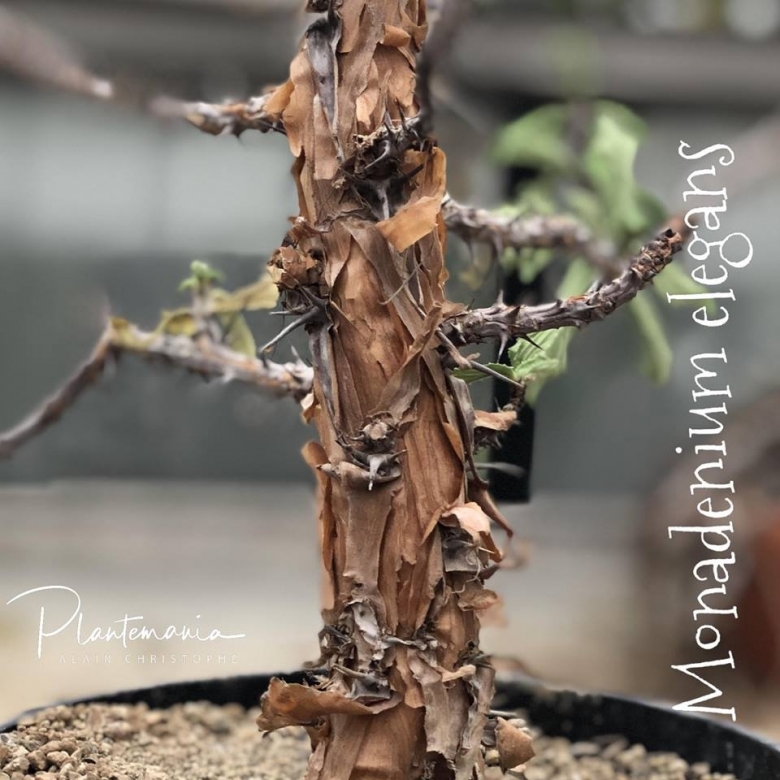Accepted Scientific Name: Euphorbia biselegans Bruyns
Taxon 55: 412 2006

Monadenium elegans (Euphorbia biselegans) Photo by: © Plantemania
Origin and Habitat: Tanzania (Great Ruaha River gorge);
Altitude range: 650-875 metres above sea level.
Habitat and ecology: Euphorbia biselegansSN|29584]]SN|29584]] grows on sandy soils and rocky slopes in deciduous woodland.
Synonyms:
Common Names include:
JAPANESE (日本語): エレガンス
Description: Euphorbia biselegansSN|29584]]SN|29584]], best know as Monadenium elegansSN|29585]]SN|29585]], is a few-branched tree or shrub up to 3.5 metres tall. The stems are folded with a flaking shiny yellowish brown papery bark. The branches eventually become pendulous.
Derivation of specific name. "elegans', elegant; for the appearance.
Stem: Few branched with shiny papery brown bark. Branches with 3 slender spines 10-18 mm long (1 + 2 stipular spines) in 3-5 longitudinal series at nodes below leaf-scars.
Leaves: Subsessile, glabrous, fleshy, obovate, approx. 4 x 3 cm, margins toothed, undulate, midrib keeled and toothed on the lower surface.
Inflorescences (cymes): 2- to 3-forked. Peduncles to 3.5 cm long. Bra-cup 9 x 10 mm a little longer than the involucre, greenish white.
Flowers (cyathia): 8 x 4.5 mm, with barrel-shaped involucres, white edged with red. Lobes 5 x 2 mm, deeply divided into 5-7 segments. Male flowers with stamens 6.5 mm long. Female flower with styles 5 mm long, joined at the base with deeply bifid spreading apices. Ovary pubescent on a reflexed pedicel.
Bibliography: Major references and further lectures
1) Susan Carter, A. R. Smith, “Flora of Tropical East Africa - Euphorbiaceae V 2 (1988)”, CRC Press, 1 June 1988
2) Focke Albers, “Illustrated Handbook of Succulent Plants: Dicotyledons”, Volume 2, Springer Science & Business Media, 2002
3) Urs Eggli, Leonard E. Newton, “Etymological Dictionary of Succulent Plant Names”, Springer Science & Business Media, 29 June 2013










